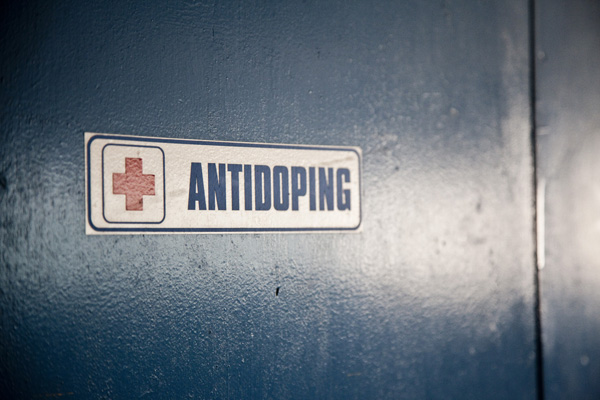Ozone has many uses throughout the world. I have researched and am familiar with most of these uses. Over my 10+ years of experience with ozone I have come to recognize that oxidation through the power of ozone may be more useful than I will ever realize. However I was surprised by the following article.
It appears as if ozone has been used to enhance the physical performance of athletes. While ozone does have medical application this is beyond virus and bacteria elimination in the body. This would lead one to believe that there is a method by which ozone could increase the active oxygen in the blood stream? Read on:
Belgian pro cyclists implicated in blood doping investigation
Belgian investigation centres on activities of Dr Chris Mertens and 19 athletes, majority of whom are cyclists
A Belgian blood doping investigation centred on 19 athletes and Doctor Chris Mertens may go to trial this winter.
According to newspaper Het Nieuwsblad, a Leuven public prosecutor is pushing for the trial after a two and a half year investigation based on Mertens and his practices. The Belgian daily did not have the 19 names, but reported that the majority are famous and semi-famous road and cyclo-cross cyclists.
Mertens allegedly doped athletes’ blood with ozone by drawing blood, enriched it with ozone and transfusing it back into their bodies. The doctor reportedly also encouraged athletes to dope.
The World Anti-Doping Agency (WADA) bans blood transfusions and considers it doping. In 2006, the Operación Puerto doping scandal rocked cycling when Spanish police raided Dr Eufemiano Fuentes’ offices and found stored blood bags waiting to be transfused back into athletes. The scandal brought bans for cyclists like Ivan Basso, Alejandro Valverde and Jan Ullrich.
Puerto and other doping investigations over the past fews years have shaken traditional cycling nations France, Italy, Germany and Spain, but Belgium mostly avoided any major scandals. With this case, the Leuven office believes that it has enough illegal acts associated with Mertens to push for a trial.
“Three criminal acts were committed,” Sarah Callewaert, representative for the prosecutor’s office in Leuven, told Belgium’s Sporza television. “First, there is ozone therapy, transfusions and encouraging athletes in violating doping rules.”
Callewaert added the office will decide on November 14 if the case goes to court and that if so, which judge will preside over it.
Mertens’ name already has been connected with cycling. In January 2013, prosecutors stopped cyclo-cross rider Tom Meeusen (Fidea) from racing in the Rome World Cup and questioned him about his connection to Mertens for three hours.
Jurgen Van den Broeck (Lotto-Belisol), fourth behind Bradley Wiggins in the 2012 Tour de France, said in January 2013 that he visited Mertens but it was just to treat a sinus problem. The cyclist said that he went to Mertens instead of his family doctor because he needed someone with knowledge of which drugs are on WADA’s prohibited list.
It is unclear if Van den Broeck and Meeusen are among the 19 athletes’ names in the hands of Leuven’s prosecutor.
Tour de France champion Vincenzo Nibali reacted to the recent doping cases in his Astana team by saying they are “ugly” but “isolated.”
In the last two months, three Kazakh cyclists, brothers Maxim and Valentin Iglinskiy, and Ilya Davidenok tested positive for banned drugs.
“The first reaction when learning of this is rage,” the Italian said at 2015 Tour presentation yesterday, according to France’s Le Monde newspaper.
“You say; ‘But damn, how is it possible that something like this is still happening today?’ You really have to be stupid” said Nibali.
“This is an isolated case. We’re speaking of two brothers, it happens in families, outside of the team. It’s ugly because the entire team must pay the consequences, even if it has nothing to do with this story.”
Davidenok failed an anti-doping test for steroids, but raced for Astana’s continental, third division team. The Iglinskiys both failed tests for EPO while racing for the Kazakhstany WorldTour team.
Maxim Iglinskiy played a key role to help Nibali win the Tour this July and previously won the 2012 Liège-Bastogne-Liège classic by catching and passing Nibali, who was then with team Liquigas, in the final 1.3 kilometres.
Cycling’s governing body, the UCI last week called the doping scandal “an extremely serious situation” that reflects poorly on the team and its management. It asked the licence commission to review Astana’s WorldTour status. The team will have to explain itself in the coming month based on the commission’s ethical criterion.
The commission withheld Katusha’s licences for similar problems in 2012, though the Court of Arbitration for Sport (CAS) later ruled it could not do so and allowed the team to race in the top tier for 2013.
Tour de France organiser ASO took things in to their own hands in 2008 by barring Astana from participating in its race because of doping problems in the previous year.
“There will probably be sanctions, but I think it is the concerned riders that should pay, not us, because they are the ones who did it, not us,” Nibali continued.
“It would need to be a big ban. Apparently two-year suspensions are no longer sufficient.”
Nibali explained that followers should not consider his Tour de France victory ride suspicious.
“I answered every [doping] question, I never avoided the subject. I have always been transparent and available on these questions, even when I was at team Liquigas,” Nibali added.
“Things have changed thanks to the anti-doping agencies, it’s a good thing that they do more and more controls.”


